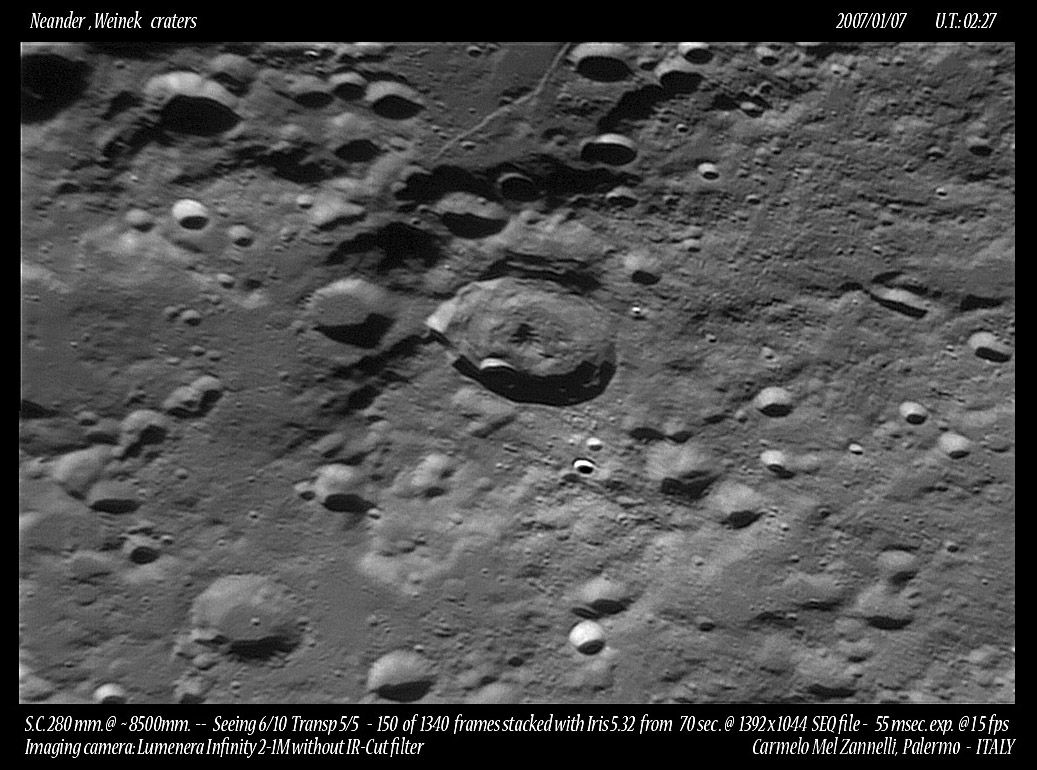Difference between revisions of "July 30, 2018"
(Created page with "__NOTOC__ =A Bend Without (Known) Reason= Originally published May 17, 2009 <!-- Start of content --> <!-- ws:start:WikiTextHeadingRule:2:<h1> --> <!-- ws:start:Wik...") |
|||
| (One intermediate revision by the same user not shown) | |||
| Line 15: | Line 15: | ||
<br /> | <br /> | ||
<strong>Related Links</strong><br /> | <strong>Related Links</strong><br /> | ||
| − | Rükl plate [ | + | Rükl plate [https://the-moon.us/wiki/Rükl_68 68]<br /> |
Carmelo's [http://www.carmelozannelli.com/ website] - coming soon (but a nice title page already)<br /> | Carmelo's [http://www.carmelozannelli.com/ website] - coming soon (but a nice title page already)<br /> | ||
<br /> | <br /> | ||
Latest revision as of 19:46, 18 August 2018
A Bend Without (Known) Reason
Originally published May 17, 2009

north left image by Carmelo Mel Zannelli, Palermo, Sicily - Italy
Neader is a standard mid-size crater that is now most commonly sought out as a guidepost to the Neander Fault. Most recently previously imaged by view emphasizes what is hardly noticeable here: a large landslip has elongated the crater northward and dumped wall material on the floor so that the flat spots that exists on other sides of the central peak is missing on the north. Apparently the rim collapse was not caused by the formation of the bright rimmed, 11 km wide Neander A on the northwest inner wall of Neander because the shape of A is not distorted, as it would be if the material it formed on had moved downslope. In the earliest images of the linear structure near Neander it was not clear if it was a rille or a fault. There is still some ambiguity but Carmelo's image reveals a bright wall of a fault, but the eastern portion of it seems to match the bright edge with a shadow so that portion looks more like a rille. It is always peculiar when a lunar linear feature takes a sharp bend because most forces tend to act radial and concentric to basins. The northern (left) part of the Neander Fault is radial to the nearby Nectaris Basin, and the eastern half is about radial to Imbrium, but it is hard to see that events associated with distant Imbrium influenced it.
Chuck Wood
Technical Details
See image margin
Related Links
Rükl plate 68
Carmelo's website - coming soon (but a nice title page already)
Yesterday's LPOD: Ancient Nothing?
Tomorrow's LPOD: Degrees of Flooding
COMMENTS?
Register, Log in, and join in the comments.



